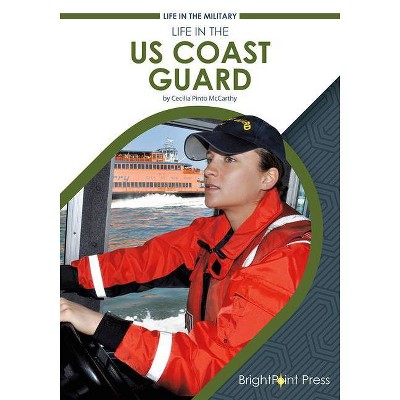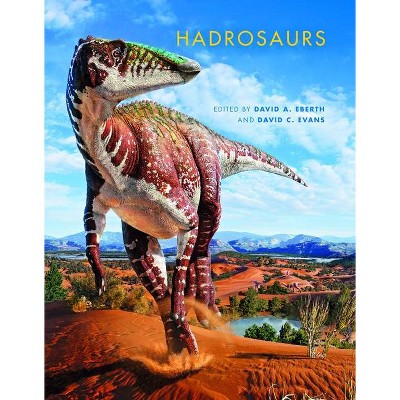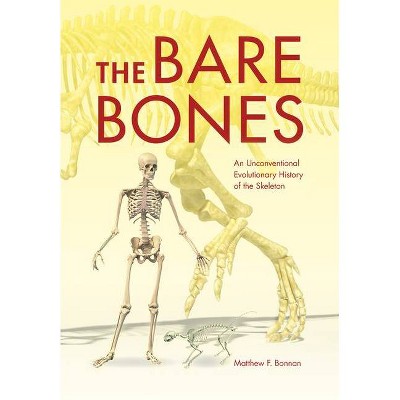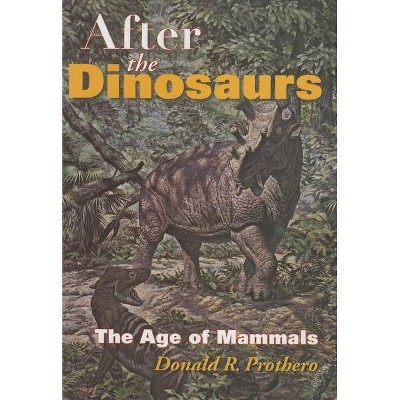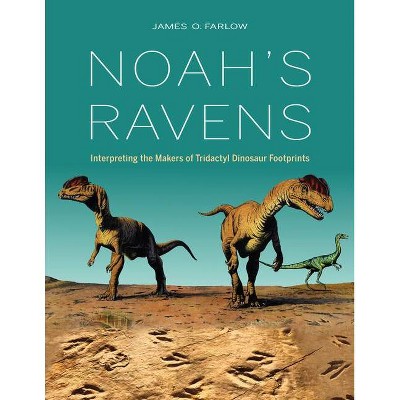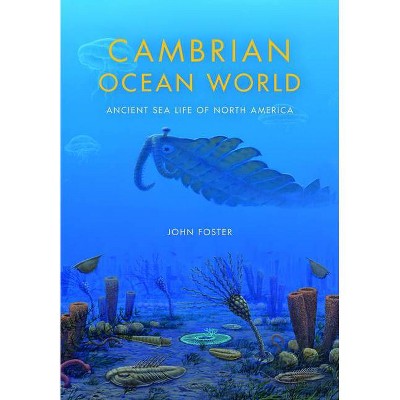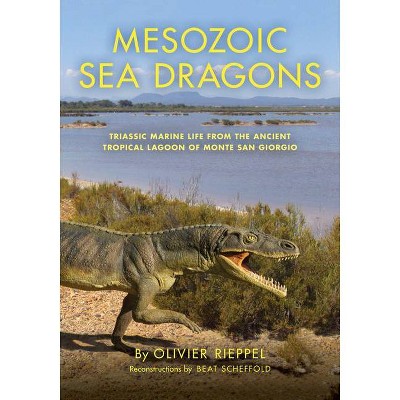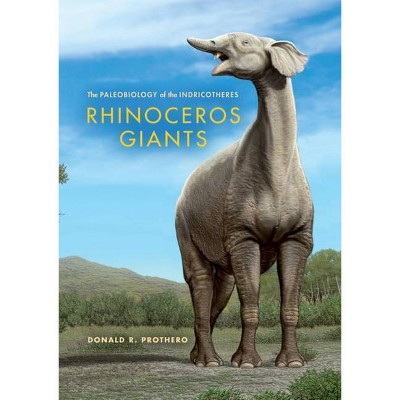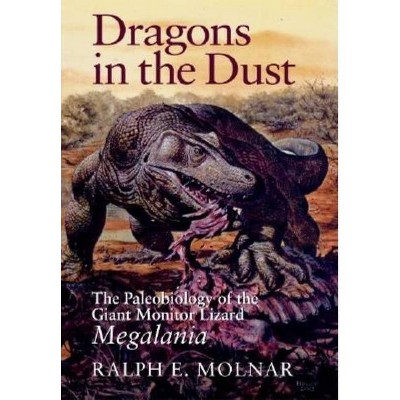Life Traces of the Georgia Coast - (Life of the Past) by Anthony J Martin (Hardcover)
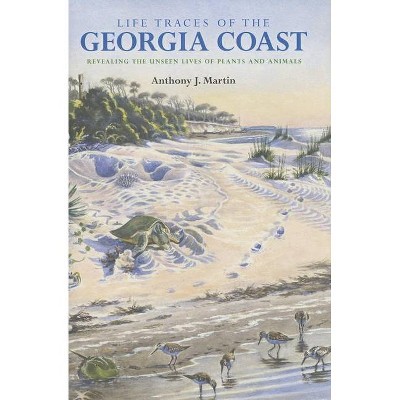
Similar Products
Products of same category from the store
AllProduct info
<p/><br></br><p><b> About the Book </b></p></br></br>The result is an aesthetically appealing and scientifically accurate book that will serve as both a source book for scientists and for anyone interested in the natural history of the Georgia coast.<p/><br></br><p><b> Book Synopsis </b></p></br></br><p>Have you ever wondered what left behind those prints and tracks on the seashore, or what made those marks or dug those holes in the dunes? <i>Life Traces of the Georgia Coast</i> is an up-close look at these traces of life and the animals and plants that made them. It tells about how the tracemakers lived and how they interacted with their environments. This is a book about ichnology (the study of such traces) and a wonderful way to learn about the behavior of organisms, living and long extinct. <i>Life Traces</i> presents an overview of the traces left by modern animals and plants in this biologically rich region; shows how life traces relate to the environments, natural history, and behaviors of their tracemakers; and applies that knowledge toward a better understanding of the fossilized traces that ancient life left in the geologic record. Augmented by illustrations of traces made by both ancient and modern organisms, the book shows how ancient trace fossils directly relate to modern traces and tracemakers, among them, insects, grasses, crabs, shorebirds, alligators, and sea turtles. The result is an aesthetically appealing and scientifically grounded book that will serve as source both for scientists and for anyone interested in the natural history of the Georgia coast.</p><p/><br></br><p><b> From the Back Cover </b></p></br></br><p>You walk down a beautiful beach of a Georgia barrier island and soon notice the broken shell of a clam lying on the sand, still barely alive, and no tracks or other signs near its body. You take a few more steps, and see tiny, pinpoint-like tracks on the beach, making a V-shaped pattern as they run up from the surf and lead to a small, circular hole in the coastal dunes. Nearby, you spot a squiggle that looks as if a child dragged her finger aimlessly through the sand. A stroll through the forest of that same island reveals more enigmas: tracks of many sizes and forms, criss-crossing trails, dig marks, holes in tree trunks, piles of feathers, shallow tunnels, and other such oddities, with nary an animal in sight. The mud of a nearby salt marsh likewise holds many holes, miniature turrets, scratch marks, tracks, droppings, and trails. Amazingly, you later learn that many similar features, called trace fossils, are preserved in the geologic record, providing paleontologists and geologists with comparably intriguing mysteries.</p><p>What insights can paleontologists and geologists gain by studying modern traces and comparing these to trace fossils?<i> Life Traces of the Georgia Coast</i> answers that question, opening eyes and minds through the perspective of ichnology, the study of modern and fossil traces made by plants and animals. Integrating facets of biology, ecology, geology, paleontology, and old-fashioned (but time-honored) field observations, Anthony J. Martin demonstrates how ichnology works, using a comprehensive case study of traces and the tracemakers of the Georgia barrier islands. Each chapter begins with a story about traces on a Georgia barrier island, followed by detailed information about how to interpret this unobserved behavior of its plants, insects, worms, snails, clams, reptiles, birds, mammals, and much more. <i>Life Traces of the Georgia Coast</i> also explains how paleontologists, when using modern traces as tools for understanding, can more accurately identify tracemakers and diagnose behaviors from trace fossils. Generously illustrated and written in a lively, approachable style, this book is meant for all enthusiasts of natural history, and its lessons extend far beyond the ecosystems of the modern-day Georgia coast.</p><p/><br></br><p><b> Review Quotes </b></p></br></br><br><p>Anthony Martin has done an excellent job in presenting the field of ichnology in an engaging and entertaining way that will hopefully inspire a new generation of ichnologists.</p>-- "Priscum"<br><br><p>For a teacher who takes students to beaches or barrier islands, this is an excellent comprehensive guide that reveals the surface and depths of traces found in maritime forests, dunes, beaches and tidal flats. Martin's book is not just a low country boil, it is a feast salted with humor and insights.</p>-- "This View of Life"<br><br><p>This book provides a hefty summary of [Martin's] research; it is scientifically rigorous but still tells a good story, and is often quite humorous. Detailed descriptions of plant, invertebrate, and vertebrate traces are accompanied by many photos and diagrams. . . . Highly recommended.</p>-- "Choice"<br><br><p>This tour de force is of far greater general interest than the title might suggest...[It] provides a hefty summary of [Martin's] research; it is scientifically rigorous but still tells a good story, and is often quite humorous. Detailed descriptions of plant, invertebrate, and vertebrate traces are accompanied by many photos and diagrams....Highly recommended.</p><br><p/><br></br><p><b> About the Author </b></p></br></br><p>Anthony J. Martin is Professor of Practice at Emory University, where he teaches courses in paleontology, geology, and the environmental sciences. </p>
Price History
Price Archive shows prices from various stores, lets you see history and find the cheapest. There is no actual sale on the website. For all support, inquiry and suggestion messages communication@pricearchive.us
